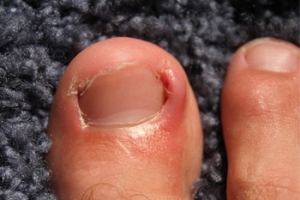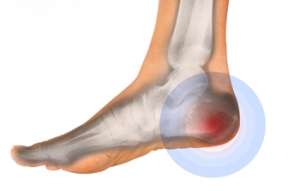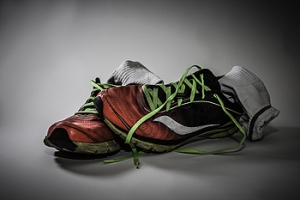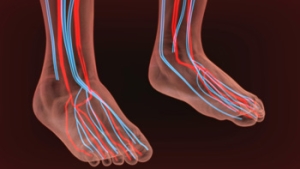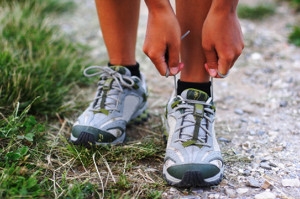Connect With Us
Blog

How to Deal with Athlete's Foot
Athlete’s foot is a type of fungal infection that affects the skin on the feet. It is caused when the tinea fungus grows on the foot. It is possible to catch the fungus through direct contact with someone who has it or by touching a surface that is contaminated with it. This type of fungus thrives in warm, moist environments such as showers, locker room floors, and swimming pools. Your risk of getting it may also increase by wearing tight-fitting, closed-toe shoes, or by having sweaty feet.
Symptoms of athlete’s foot include itching, stinging or burning sensations between the toes. You may also experience toenails that are discolored, thick, crumbly, or toenails that pull away from the nail bed.
Your podiatrist may diagnose athlete’s foot by detecting these symptoms or by doing a skin test to see if there is a fungal infection present. The most common exam used to detect Athlete’s foot is a skin lesion potassium hydroxide exam. To use this method, your doctor will scrape off a small area of the infected skin and place it into potassium hydroxide. The potassium hydroxide will destroy the normal cells and leave the fungal cells untouched so that they are visible under a microscope.
There are a variety of treatment options for athlete’s foot. Some medications are miconazole (Desenex), terbinafine (Lamisil AT), clotrimazole (Lotrimin AF), butenafine (Lotrimin Ultra), and tolnaftate (Tinactin). While these options may be able to treat your fungus, it is best that you consult with a podiatrist in order to see which treatment option may work best for you.
In some cases, Athlete’s foot may lead to complications. A severe complication would be a secondary bacterial infection which may cause your foot to become swollen, painful, and hot.
There are ways that you can prevent athlete’s foot. Washing your feet with soap and water each day and drying them thoroughly is an effective way to prevent infections. You also shouldn’t share socks, shoes, or towels with other people. It is crucial that you wear shower sandals in public showers, around swimming pools, and in other public places. Additionally, you should make sure you wear shoes that can breathe and change your socks when your feet become sweaty. If you suspect that you have Athlete’s foot, you should seek help from a podiatrist as soon as possible.
Symptoms of an Ingrown Toenail
 The definition of an ingrown toenail is described as the toenail growing into a portion of the skin on either side of the nail. This condition may cause little discomfort in the early stages of development and may worsen as time progresses. Swelling, redness, or a possible infection may occur as a result of the nail piercing the skin, and this may lead to an infection. The body’s natural response for healing is to have a specific type of skin that may grow at the site of the infection, which is known as hypergranulation. This will generally dissolve once treatment has begun and the infection dissipates. There are several causes for this ailment to occur, and these may include wearing poorly fitting shoes or socks, having a family history of ingrown toenails, or improperly trimming the toenails. If you feel you have developed this uncomfortable condition, it is suggested to seek the advice of a podiatrist who can properly assist in the correct treatment.
The definition of an ingrown toenail is described as the toenail growing into a portion of the skin on either side of the nail. This condition may cause little discomfort in the early stages of development and may worsen as time progresses. Swelling, redness, or a possible infection may occur as a result of the nail piercing the skin, and this may lead to an infection. The body’s natural response for healing is to have a specific type of skin that may grow at the site of the infection, which is known as hypergranulation. This will generally dissolve once treatment has begun and the infection dissipates. There are several causes for this ailment to occur, and these may include wearing poorly fitting shoes or socks, having a family history of ingrown toenails, or improperly trimming the toenails. If you feel you have developed this uncomfortable condition, it is suggested to seek the advice of a podiatrist who can properly assist in the correct treatment.
Ingrown toenails may initially present themselves as a minor discomfort, but they may progress into an infection in the skin without proper treatment. For more information about ingrown toenails, contact one of our podiatrists of Family Foot Care of Long Island. Our doctors can provide the care you need to keep you pain-free and on your feet.
Ingrown Toenails
Ingrown toenails are caused when the corner or side of a toenail grows into the soft flesh surrounding it. They often result in redness, swelling, pain, and in some cases, infection. This condition typically affects the big toe and may recur if it is not treated properly.
Causes
- Improper toenail trimming
- Genetics
- Improper shoe fitting
- Injury from pedicures or nail picking
- Abnormal gait
- Poor hygiene
You are more likely to develop an ingrown toenail if you are obese, have diabetes, arthritis, or have any fungal infection in your nails. Additionally, people who have foot or toe deformities are at a higher risk of developing an ingrown toenail.
Symptoms
Some symptoms of ingrown toenails are redness, swelling, and pain. In rare cases, there may be a yellowish drainage coming from the nail.
Treatment
Ignoring an ingrown toenail can have serious complications. Infections of the nail border can progress to a deeper soft-tissue infection, which can then turn into a bone infection. You should always speak with your podiatrist if you suspect you have an ingrown toenail, especially if you have diabetes or poor circulation.
If you have any questions, please feel free to contact our office located in Port Jefferson Station, NY . We offer the newest diagnostic and treatment technologies for all your foot care needs.
Ingrown Toenails
An ingrown toenail is a nail that has curved downward and grown into the skin. This typically occurs at either the nail borders or the sides of the nail. As a result, pain, redness, swelling, and warmth may occur in the toe. If a break in the skin forms due to the ingrown nail, bacteria may enter and cause an infection in the area; this is typically characterized by a foul odor and drainage.
Ingrown toenails have multiple reasons for developing. In many instances, the condition is a result of genetics and is inherited. The most common cause, however, is improper trimming; cutting the toenails too short forces the skin beside the nail to fold over. An ingrown toenail can also develop due to trauma, such as stubbing the toe, having an object fall on the toe, or participating in activities that involve repeated kicking or running. Wearing shoes that are too tight or too short can also cause ingrown toenails.
Treatment for an ingrown toenail varies between patients and the severity of the condition. In most cases, it is best to see your podiatrist for thorough and proper treatment. After examining your toe, your podiatrist may prescribe oral antibiotics to clear the infection if one is present. Surgical removal of either a portion of the nail or the entire nail may also be considered. In some cases, complete removal or destruction of the nail root may be required. Most patients who undergo nail surgery experience minimal pain afterward and can return to normal activity the following day.
Ingrown toenails can be prevented with proper nail trimming and by avoiding improper-fitting shoes. When cutting the toenails, be sure that you are cutting in a straight line and avoid cutting them too short. Shoes should not be too short or tight in the toe box.
How to Diagnosis Plantar Fasciitis
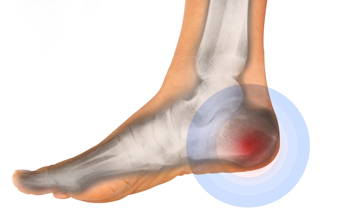 Many people who have heel pain are often diagnosed with a condition that is known as plantar fasciitis. The plantar fascia is the name of the tissue that runs along the bottom of the foot, which connects the heel bone to the toes. If this should become inflamed, plantar fasciitis may most likely develop. A proper examination is typically conducted to determine if this condition exists and this may include paying close attention to the arches of the foot, which may be exceptionally high, and pressing on the heel, which can pinpoint where the pain is originating from. Most patients who are afflicted with plantar fasciitis may experience heel pain as the first steps are taken in the morning. Additionally, if exercising is part of a daily routine, heel pain may be noticed after the workout is completed. Research has shown that recent lifestyle changes may play a significant role in developing this condition, which may include starting a new job, or spending extended periods of time walking or standing. This may be a result of the plantar fascia moving out of proper alignment. If you have heel pain, please consult with a podiatrist, so a proper diagnosis can be performed, and the correct treatment can begin.
Many people who have heel pain are often diagnosed with a condition that is known as plantar fasciitis. The plantar fascia is the name of the tissue that runs along the bottom of the foot, which connects the heel bone to the toes. If this should become inflamed, plantar fasciitis may most likely develop. A proper examination is typically conducted to determine if this condition exists and this may include paying close attention to the arches of the foot, which may be exceptionally high, and pressing on the heel, which can pinpoint where the pain is originating from. Most patients who are afflicted with plantar fasciitis may experience heel pain as the first steps are taken in the morning. Additionally, if exercising is part of a daily routine, heel pain may be noticed after the workout is completed. Research has shown that recent lifestyle changes may play a significant role in developing this condition, which may include starting a new job, or spending extended periods of time walking or standing. This may be a result of the plantar fascia moving out of proper alignment. If you have heel pain, please consult with a podiatrist, so a proper diagnosis can be performed, and the correct treatment can begin.
Plantar fasciitis is a common foot condition that is often caused by a strain injury. If you are experiencing heel pain or symptoms of plantar fasciitis, contact one of our podiatrists from Family Foot Care of Long Island. Our doctors can provide the care you need to keep you pain-free and on your feet.
What Is Plantar Fasciitis?
Plantar fasciitis is one of the most common causes of heel pain. The plantar fascia is a ligament that connects your heel to the front of your foot. When this ligament becomes inflamed, plantar fasciitis is the result. If you have plantar fasciitis you will have a stabbing pain that usually occurs with your first steps in the morning. As the day progresses and you walk around more, this pain will start to disappear, but it will return after long periods of standing or sitting.
What Causes Plantar Fasciitis?
- Excessive running
- Having high arches in your feet
- Other foot issues such as flat feet
- Pregnancy (due to the sudden weight gain)
- Being on your feet very often
There are some risk factors that may make you more likely to develop plantar fasciitis compared to others. The condition most commonly affects adults between the ages of 40 and 60. It also tends to affect people who are obese because the extra pounds result in extra stress being placed on the plantar fascia.
Prevention
- Take good care of your feet – Wear shoes that have good arch support and heel cushioning.
- Maintain a healthy weight
- If you are a runner, alternate running with other sports that won’t cause heel pain
There are a variety of treatment options available for plantar fasciitis along with the pain that accompanies it. Additionally, physical therapy is a very important component in the treatment process. It is important that you meet with your podiatrist to determine which treatment option is best for you.
If you have any questions, please feel free to contact our office located in Port Jefferson Station, NY . We offer the newest diagnostic and treatment technologies for all your foot care needs.
Plantar Fasciitis
Plantar fasciitis is one of the most common causes of heel pain. The plantar fascia is the thick band of tissue that connects the heel bone to the toes. When this band of connective tissue becomes inflamed, plantar fasciitis occurs. Fortunately, this condition is treatable.
There are several factors that may put you at a greater risk for developing plantar fasciitis. One of the biggest factors is age; plantar fasciitis is common in those between the ages of 40 to 60. People who have jobs that require them to be on their feet are also likely to develop plantar fasciitis. This includes factory workers, teachers, and others who spend a large portion of their day walking around on hard surfaces. Another risk factor is obesity because excess weight can result in extra stress being placed on the plantar fascia.
People with plantar fasciitis often experience a stabbing pain in the heel area. This pain is usually at its worst in the morning, but can also be triggered by periods of standing or sitting. Plantar fasciitis may make it hard to run and walk. It may also make the foot feel stiff and sensitive, which consequently makes walking barefoot difficult.
Treatment for plantar fasciitis depends on the severity of the specific case of the condition. Ice massage applications may be used to reduce pain and inflammation. Physical therapy is often used to treat plantar fasciitis, and this may include stretching exercises. Another treatment option is anti-inflammatory medication, such as ibuprofen.
If you suspect that you have plantar fasciitis, meet with your podiatrist immediately. If left untreated, symptoms may lead to tearing and overstretching of the plantar fascia. The solution is early detection and treatment. Be sure to speak with your podiatrist if you are experiencing heel pain.
Different Types of Running Shoes
 Choosing the correct running shoe is crucial in protecting the feet while pursuing an active hobby or sport. One of the first things to do is to determine what type of running style you intend to pursue, as this can aid in selecting the shoes that are most comfortable and supportive for you. There are shoes specifically designed for different types of running, and these can include jogging on hard surfaces, running on trails, which may have rocks and other obstacles, or running where balance is required. Research has shown that it may be beneficial to recognize any patterns in how the shoes are wearing. This may be helpful in determining which type of shoe is best for you. If you would like additional information on how to choose a running shoe that is right for your feet and needs, speak to a podiatrist who can properly guide you.
Choosing the correct running shoe is crucial in protecting the feet while pursuing an active hobby or sport. One of the first things to do is to determine what type of running style you intend to pursue, as this can aid in selecting the shoes that are most comfortable and supportive for you. There are shoes specifically designed for different types of running, and these can include jogging on hard surfaces, running on trails, which may have rocks and other obstacles, or running where balance is required. Research has shown that it may be beneficial to recognize any patterns in how the shoes are wearing. This may be helpful in determining which type of shoe is best for you. If you would like additional information on how to choose a running shoe that is right for your feet and needs, speak to a podiatrist who can properly guide you.
You should always make sure your running shoes fit properly in order to avoid injury. For more information, contact one of our podiatrists from Family Foot Care of Long Island. Our doctors can provide the care you need to keep you pain-free and on your feet.
Choosing the Right Running Shoe for Your Foot Type
Improper shoe sizing can cause a myriad of problems for your feet. Shoes that don’t fit you properly can lead to muscular imbalances in your body, which can result in foot, knee, and hip injuries.
Tips for Finding the Right Running Shoe
- Make sure you have a thumb’s width of wiggle room between the end of your longest toe and the front of the shoe.
- There should be little to no slipping at the heel
- Don’t assume your size in one shoe brand will be your size in another
- Do not lace up your shoes too tightly
- Walk around in the store with your new shoes before you buy them
If you have any questions please feel free to contact our our office located in Port Jefferson Station, NY . We offer the newest diagnostic and treatment technologies for all your foot and ankle needs.
Choosing the Right Running Shoe
Choosing the right running shoes for you is an important part of running. A good pair of running shoes will make the running experience more enjoyable for you and prevent potential injury.
Poorly-fitted shoes can increase the risk of injury in runners substantially. Common injuries from running with poor quality shoes include shin splints, sprained ankles, Achilles tendinitis, stress fractures, plantar fasciitis and more. This is due to the fact that bad shoes do not provide proper foot support, can increase pronation (how much the foot rolls when hitting the ground), have little to no cushioning, do not allow the feet to breath, and do not provide enough flex and rigidity in the right parts.
When looking for running shoes, first, determine where you will be running. If you are a trail runner, then pick trail shoes. If you run on concrete and asphalt, then regular running shoes are the best choice. When trying on shoes, its best to go at the end of the day as feet grow during the day and shrink after a night of sleep. Shoes should be more rigid towards the back of the foot while being more flexible up where the toes are. The toe box should provide enough room for the toes to move freely. The overall fit should be snug, not too tight but not too loose. A good pair of running shoes should also provide enough arch support for your foot type. If you experience overpronation or under-pronation while running, try to find a pair of shoes that will help correct this with different sole patterns. Finally, try to find a pair of shoes that allow the feet to breathe like nylon mesh or synthetic leather.
Don’t forget about the socks either. Socks that hold too much moisture can lead to athlete’s foot. Socks should be breathable so that your feet can air out and breathe. Synthetic socks wick away moisture like sweat. If you tend to run a lot, having a second pair of shoes that you can wear while you let the first pair air out is smart. Just don’t forget to replace your shoes after about every 300 to 500 miles.
Before you start running, it is advised to see a podiatrist to see if running is right for you. They can also offer good advice on how to run and what to look for in a pair of running shoes. If you have flat feet or poorly supported ones, they can also offer custom-made orthotics that will help give your feet the support they need.
Causes of Poor Circulation
 Research has shown there may be several indicators of poor circulation. These may include discoloration of the toes, a loss of feeling or numbing sensation, dry skin, or frequent headaches. This condition may typically happen as a result of damage the blood vessels have incurred, and there are several ways for this to occur. Genetics may play a significant role, in addition to having excess fat, lack of following an effective exercise routine, and developing diabetes, which is the result of elevated glucose levels. Poor circulation may be indicative of raynaud’s disease, which typically causes the fingers and toes to lose feeling and become cold. If you are experiencing any symptoms of poor circulation, it is suggested to speak to a podiatrist who can properly diagnosis this condition and begin the correct treatment.
Research has shown there may be several indicators of poor circulation. These may include discoloration of the toes, a loss of feeling or numbing sensation, dry skin, or frequent headaches. This condition may typically happen as a result of damage the blood vessels have incurred, and there are several ways for this to occur. Genetics may play a significant role, in addition to having excess fat, lack of following an effective exercise routine, and developing diabetes, which is the result of elevated glucose levels. Poor circulation may be indicative of raynaud’s disease, which typically causes the fingers and toes to lose feeling and become cold. If you are experiencing any symptoms of poor circulation, it is suggested to speak to a podiatrist who can properly diagnosis this condition and begin the correct treatment.
While poor circulation itself isn’t a condition; it is a symptom of another underlying health condition you may have. If you have any concerns with poor circulation in your feet contact one of our podiatrists of Family Foot Care of Long Island. Our doctors will treat your foot and ankle needs.
Poor Circulation in the Feet
Peripheral artery disease (PAD) can potentially lead to poor circulation in the lower extremities. PAD is a condition that causes the blood vessels and arteries to narrow. In a linked condition called atherosclerosis, the arteries stiffen up due to a buildup of plaque in the arteries and blood vessels. These two conditions can cause a decrease in the amount of blood that flows to your extremities, therefore resulting in pain.
Symptoms
Some of the most common symptoms of poor circulation are:
- Numbness
- Tingling
- Throbbing or stinging pain in limbs
- Pain
- Muscle Cramps
Treatment for poor circulation often depends on the underlying condition that causes it. Methods for treatment may include insulin for diabetes, special exercise programs, surgery for varicose veins, or compression socks for swollen legs.
As always, see a podiatrist as he or she will assist in finding a regimen that suits you. A podiatrist can also prescribe you any needed medication.
If you have any questions, please feel free to contact our office located in Port Jefferson Station, NY . We offer the newest diagnostic and treatment technologies for all your foot care needs.
Causes Symptoms and Treatment for Poor Circulation in the Feet
The purpose of the body’s circulation system is to transport blood, oxygen, and nutrients throughout the body. A reduction of blood to a specific part of the body may cause one to experience symptoms of poor circulation. The most common causes of poor circulation in the feet are obesity, diabetes, and heart conditions such as peripheral artery disease (PAD). Common symptoms of poor circulation include tingling, numbness, throbbing, pain and muscle cramps.
Peripheral artery disease is a common cause of poor circulation in the legs. Symptoms of PAD are cramping, pain or tiredness in the leg or hip muscles while walking or climbing stairs. This pain tends to go away with rest and starts back up when you begin to walk. It is a condition that causes the blood vessels and arteries to become narrow. Although PAD is more common in adults over the age of 50, it may also occur in younger people. A similar condition called atherosclerosis causes arteries to stiffen up due to a buildup of plaque in the arteries and blood vessels.
Blood clots are also a common cause of poor circulation in the feet. Clots may obstruct blood vessels and if they occur in the legs, they may eventually lead to pain and discoloration. This occurrence is commonly known as deep vein thrombosis (DVT) and it may travel to the lungs. Varicose veins are another condition that may lead to poor circulation, and it is caused by incompetence of the valves in the veins. Women who are overweight are prone to developing this condition. Lastly, diabetes, which is correlated with poor blood sugar metabolism may lead to chronic poor circulation. Those with diabetes often suffer from cramping in the legs, calves, thighs and buttocks.
If you are looking for ways to avoid poor circulation there are some tips you can follow. One tip is to avoid sitting for too long. If you plan to sit down for a long period of time, you should try standing up occasionally, to improve your circulation. Another great way to avoid poor circulation is to exercise. Exercise is an excellent way to pump the heart and increase blood flow. Those who suffer from poor circulation should also avoid smoking, reduce their salt intake, and try to lose weight.
If you are experiencing symptoms from poor circulation in your feet, you should consult with your podiatrist to determine the best method for treatment for you. He or she may prescribe medication in addition to recommending specific lifestyle changes to improve your circulation.
Correct Methods of Buying Shoes That Fit Properly
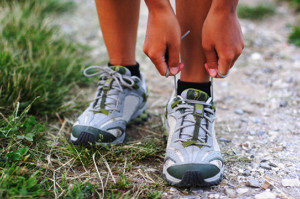 Research has shown the feet may change sizes as the aging process occurs. Many people may select shoes by the size that is indicated, despite the fact they may not fit properly. It’s important to try both shoes on, which may aid in determining if these are the correct shoes to purchase. Adequate space up to a half inch above the longest toe should be present for maximum comfort while standing up. It’s important to consider the material of the shoe, which may consist of a soft and flexible consistency that ideally should match the shape of the foot. Many people try shoes on that may fit too tightly, and their expectation may be that the shoes will stretch over time. This is considered to an erroneous method of buying shoes and a properly fitted shoe will feel good at the time it is tried on. If you would like additional information on how to buy shoes that fit properly, please consult with a podiatrist who can properly guide you.
Research has shown the feet may change sizes as the aging process occurs. Many people may select shoes by the size that is indicated, despite the fact they may not fit properly. It’s important to try both shoes on, which may aid in determining if these are the correct shoes to purchase. Adequate space up to a half inch above the longest toe should be present for maximum comfort while standing up. It’s important to consider the material of the shoe, which may consist of a soft and flexible consistency that ideally should match the shape of the foot. Many people try shoes on that may fit too tightly, and their expectation may be that the shoes will stretch over time. This is considered to an erroneous method of buying shoes and a properly fitted shoe will feel good at the time it is tried on. If you would like additional information on how to buy shoes that fit properly, please consult with a podiatrist who can properly guide you.
Getting the right shoe size is an important part of proper foot health. Seek the assistance of one of our podiatrists from Family Foot Care of Long Island. Our doctors will provide the care you need to keep you pain-free and on your feet.
Getting the Right Shoe Size
There are many people who wear shoes that are the incorrect size, negatively affecting their feet and posture. Selecting the right shoes is not a difficult process, so long as you keep several things in mind when it comes to choosing the right pair.
- When visiting the shoe store, use the tools available to measure your foot.
- Be sure there is ‘wiggle room’. There should be about an inch between your toes and the tip of your shoes.
- Do not always assume you are the same size, as manufacturers run differently.
- Purchase shoes later in the day, as your feet swell as the day progresses.
- If a shoe is not comfortable, it is not suitable. Most shoes can’t be ‘broken in’, and comfort should be the ultimate goal when it comes to choosing the right pair of shoes
As our feet hold our body weight and keep us moving, it is important to treat them right. Picking the right pair of shoes can provide your feet comfort and mobility without pain.
If you have any questions, please feel free to contact our office located in Port Jefferson Station, NY . We offer the newest diagnostic and treatment technologies for all your foot care needs.
Blog Archives
- May 2025
- April 2025
- March 2025
- February 2025
- January 2025
- December 2024
- November 2024
- October 2024
- September 2024
- August 2024
- July 2024
- June 2024
- May 2024
- April 2024
- March 2024
- February 2024
- January 2024
- December 2023
- November 2023
- October 2023
- September 2023
- August 2023
- July 2023
- June 2023
- May 2023
- April 2023
- March 2023
- February 2023
- January 2023
- December 2022
- November 2022
- October 2022
- September 2022
- August 2022
- July 2022
- June 2022
- May 2022
- April 2022
- March 2022
- February 2022
- January 2022
- December 2021
- November 2021
- October 2021
- September 2021
- August 2021
- July 2021
- June 2021
- May 2021
- April 2021
- March 2021
- February 2021
- January 2021
- December 2020
- November 2020
- October 2020
- September 2020
- August 2020
- July 2020
- June 2020
- May 2020
- April 2020
- March 2020
- February 2020
- January 2020
- December 2019
- November 2019
- October 2019
- September 2019
- August 2019
- July 2019
- June 2019
- May 2019
- April 2019
- March 2019
- February 2019
- January 2019
- December 2018
- November 2018
- October 2018
- September 2018
- August 2018
- July 2018
- June 2018
- May 2018
- April 2018
- March 2018
- February 2018
- January 2018
- December 2017
- November 2017
- October 2017
- September 2017
